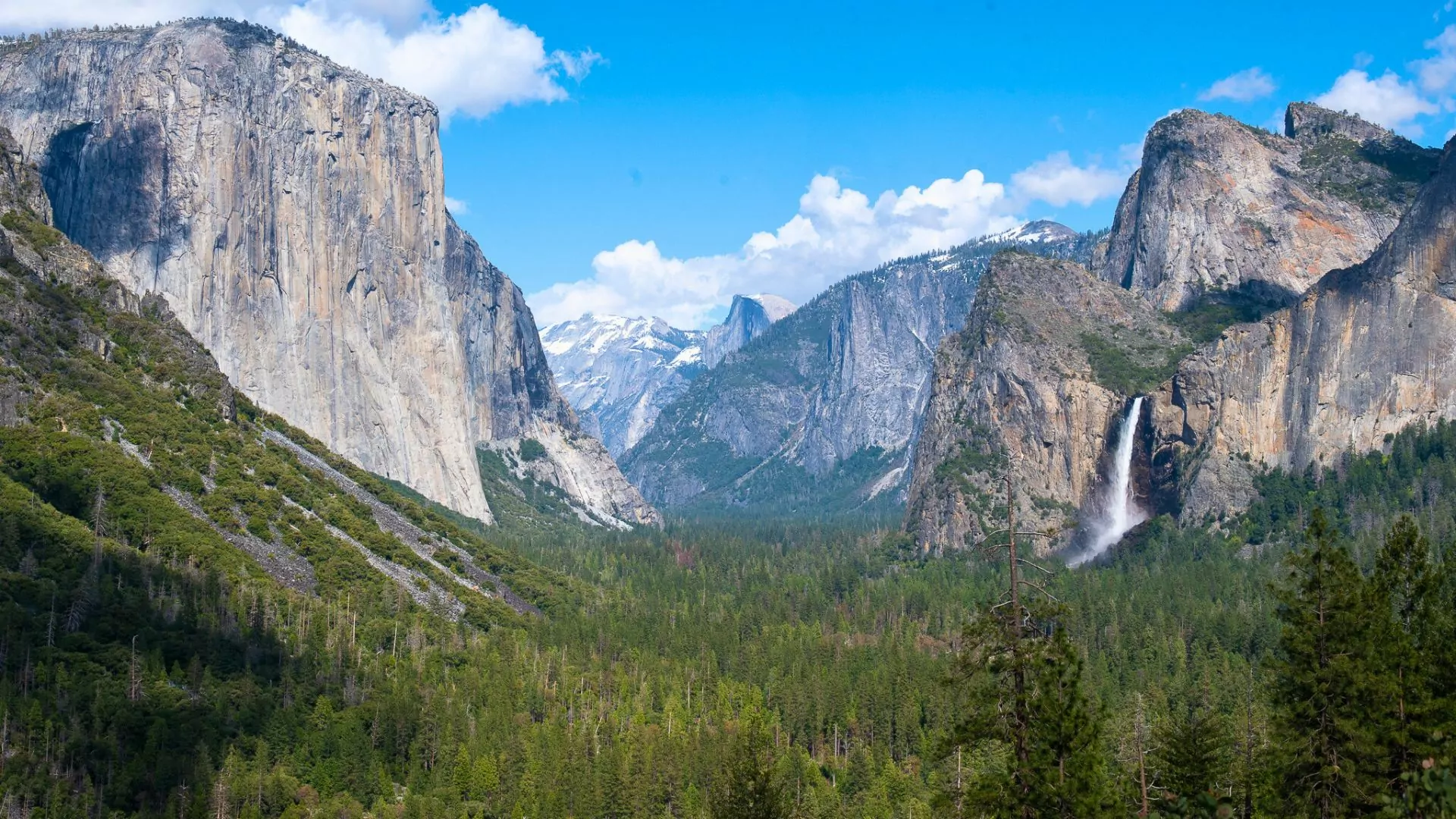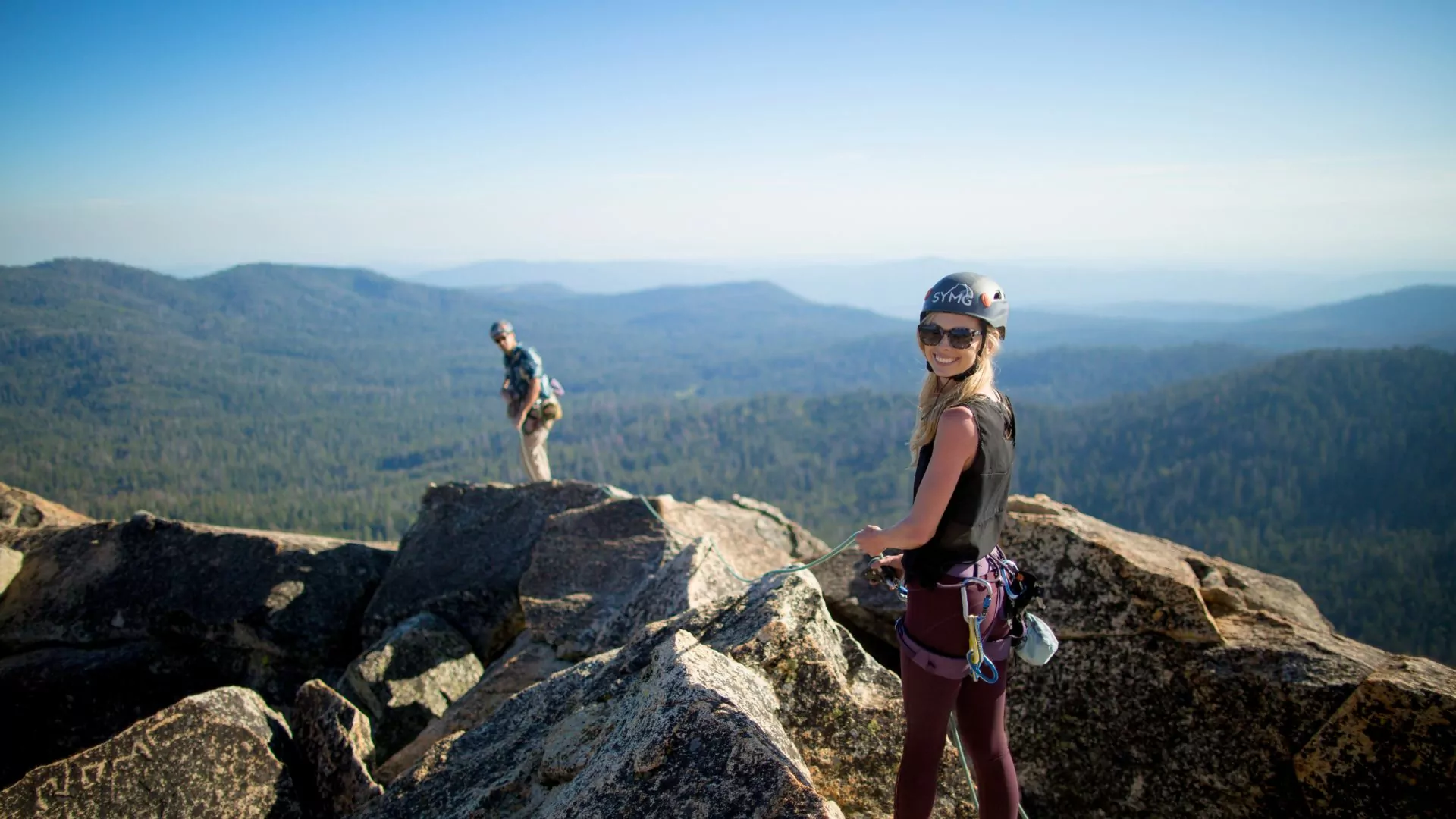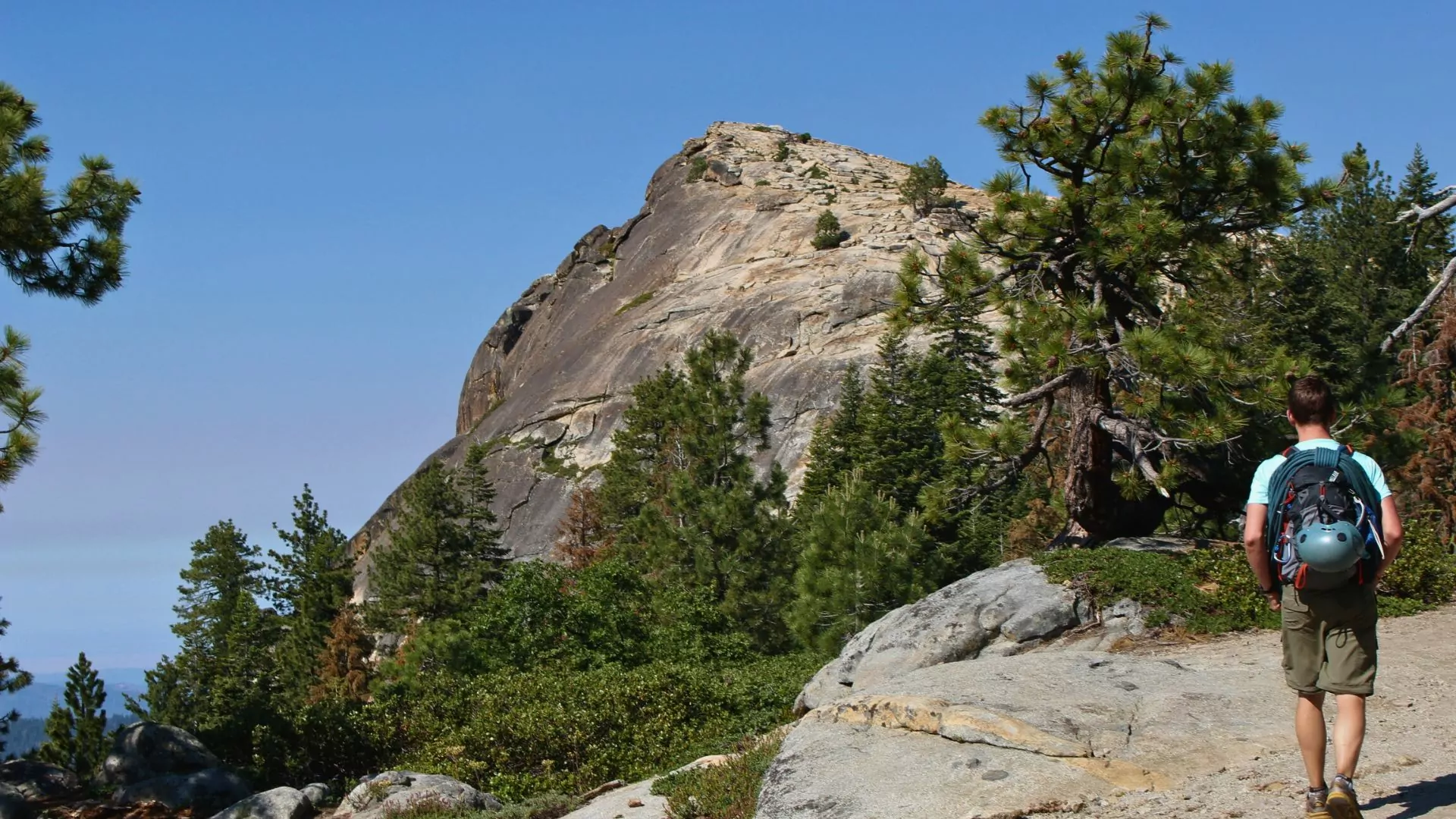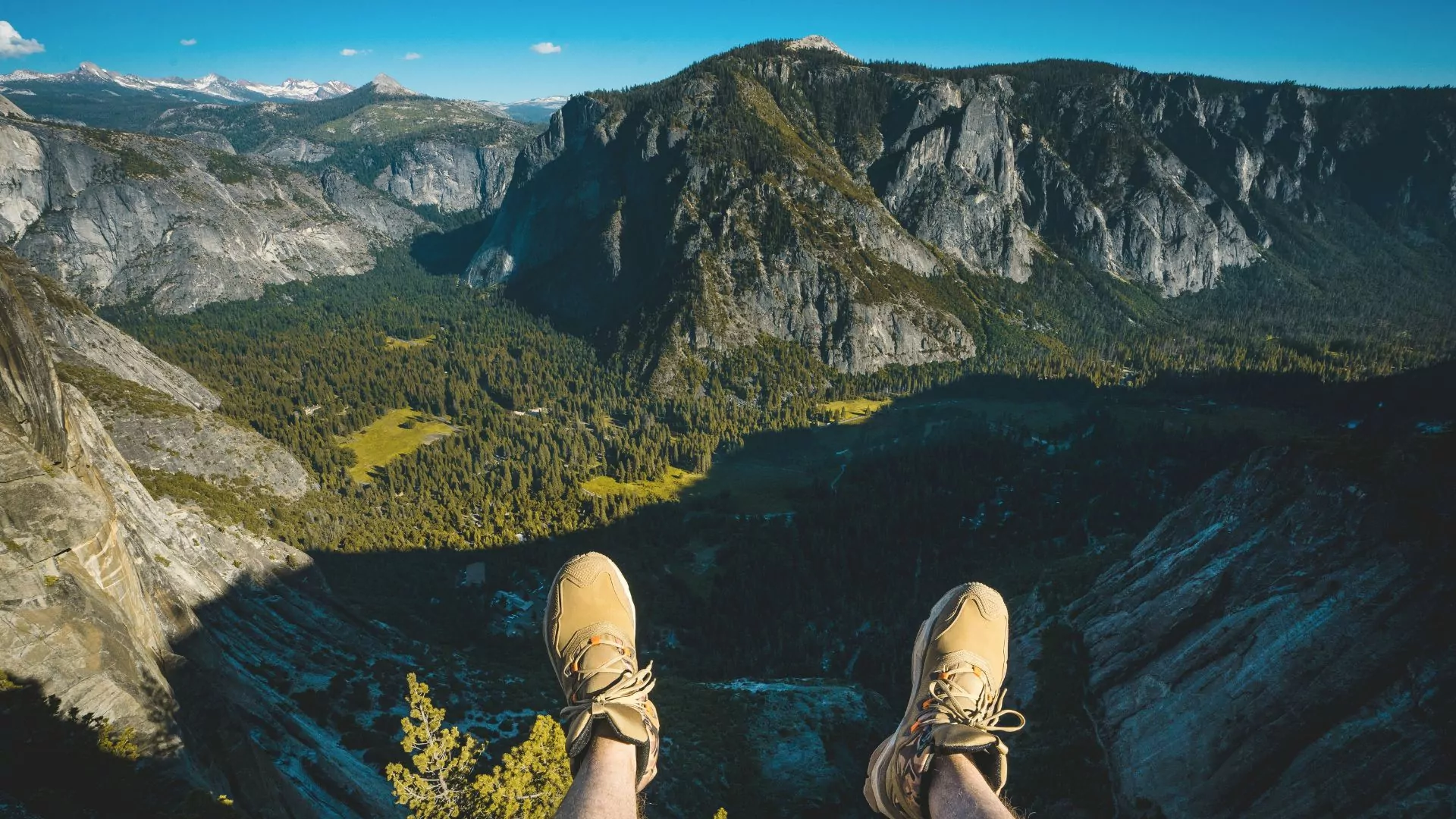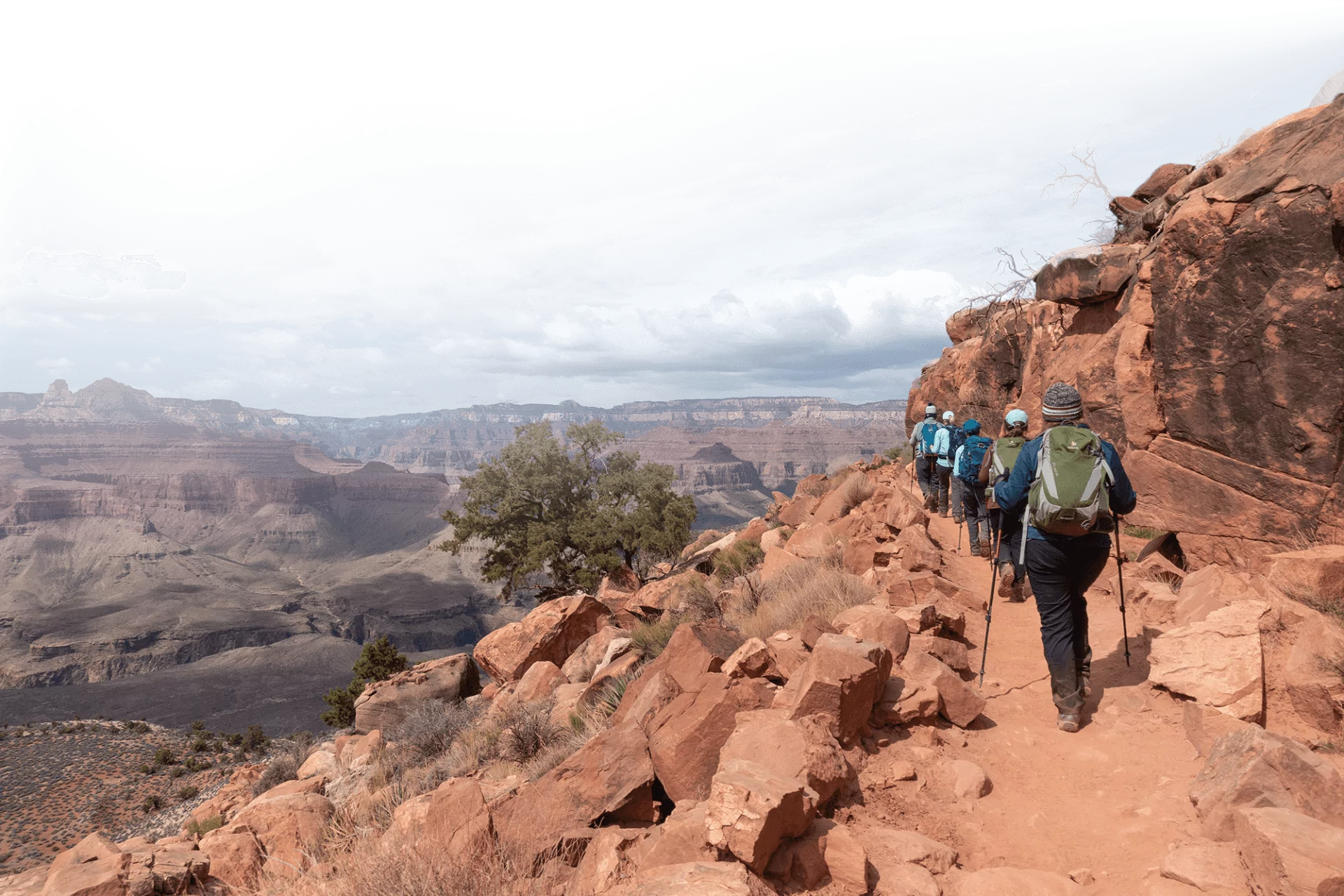The Ultimate Guide to Rock Climbing in Yosemite

The granite walls of Yosemite National Park have drawn climbers for generations, from the earliest ascents of Half Dome to the modern-day sub two hour ascents of El Capitan’s Nose. For many, climbing in Yosemite represents the pinnacle of rock climbing, offering world-class routes that range from beginner-friendly slabs to the most difficult big-wall test pieces in existence. It does not matter if you’re an aspiring trad climber or a seasoned big-wall veteran, climbing in Yosemite has something to offer.
Yosemite’s significance to the climbing community cannot be overstated, its towering cliffs and breathtaking vistas are a beacon to those seeking challenge and adventure. But, climbing here isn’t just about ascending a rock face; it’s about connecting with the landscape’s geological, cultural, and historical essence. It’s about discovering yourself while also embracing the beauty of nature.
Yosemite Geology
Yosemite’s granite walls tell a story that spans hundreds of millions of years, a tale of fire, pressure, and ice. It all began deep underground, where molten rock slowly cooled beneath the surface, eventually forming the massive, crystalline granite that would one day become El Capitan, Half Dome, and the rest of the cliffs of the Valley. Over time, the earth’s tectonic forces uplifted these rocks, and erosion stripped away the softer layers above, exposing the dense granite faces.
Then came the glaciers. During the Ice Ages, vast rivers of ice carved through the landscape, smoothing and steepening the granite faces, leaving behind the dramatic formations we see today. For climbers, the coarse, high-friction granite provides perfect cracks for jamming and clean edges for delicate foot placements, helping make it a world-class climbing destination. Each ascent is a direct connection to the powerful forces that shaped this place.
Yosemite History
Before the granite walls of Yosemite became a playground for rock climbers, the region was home to Native American tribes who lived and thrived in the area for at least 4,000 years. The Yosemite Valley and surrounding areas were inhabited primarily by the Ahwahneechee, a group of the larger Miwok tribe. These Indigenous peoples had a deep connection to the land, living off its resources and maintaining a profound respect for the environment.
The Ahwahneechee people utilized the valley for hunting, fishing, and gathering, with an intricate understanding of the area’s natural cycles and ecosystems. The iconic granite formations, such as El Capitan and Half Dome, held spiritual significance and were woven into the cultural fabric of their lives.
Early Exploration by Europeans
Although the valley was initially seen as a curiosity, the region’s unique geology soon attracted more explorers and geologists. As they ventured into the high country, peaks such as Cathedral Spires and Mount Watkins caught the attention of adventurers looking to ascend Yosemite’s steep granite cliffs. The first recorded technical ascent in Yosemite came in 1869, when famed naturalist and conservationist John Muir soloed Cathedral Peak in Tuolumne Meadows. This ascent, while modest by today’s standards, was a landmark achievement for the time and marked the beginning of Yosemite’s rock climbing history.
The Golden Age of Yosemite Climbing: The 1950s and 1960s
The 1950s and 1960s are often considered the “Golden Age” of Yosemite climbing, a period that marked the birth of modern big-wall climbing. Yosemite’s towering granite faces, particularly those of El Capitan and Half Dome, began to draw climbers from across the country. These climbers sought to push the limits of what was possible, and their success in Yosemite would forever change the sport.
In 1958, Warren Harding and his team made the first ascent of The Nose on El Capitan, a climb that would become one of the most iconic routes in the world. Their ascent took an astounding 45 days and relied heavily on aid climbing, a technique where climbers use fixed ropes, ladders, and other gear to assist their progress up the wall. This ascent was groundbreaking, as it proved that Yosemite’s massive granite walls were climbable, even though many doubted the feasibility of such a feat.
Just a few years later, in 1961, Royal Robbins and his team made the first free ascent of the Salathé Wall on El Capitan. This ascent was revolutionary for its use of free climbing, a method where climbers rely solely on their hands and feet for upward progress, using gear only for protection. The Robbins-led team’s ascent was a significant departure from the aid climbing techniques that had previously been the norm, and it marked the start of the free climbing era in Yosemite. Their approach to climbing was also more minimalist and respectful of the environment, an ethos that continues to shape climbing in Yosemite to this day.
The Stonemaster Era: Climbing Culture Blossoms
In the 1970s, Camp 4, located near the base of El Capitan, emerged as the spiritual home of Yosemite climbing culture. Camp 4 became the meeting point for climbers who gathered to share stories, hone their skills, and challenge one another. This period, often referred to as the “Stonemaster” era, saw the rise of climbers like Jim Bridwell, John Long, and John Bachar. These climbers not only made historic ascents but also played a critical role in shaping climbing culture.
During this time, the development of clean climbing took hold. Clean climbing emphasized the use of minimal protection—no pitons or permanent bolts—and a greater focus on natural gear, such as cams and nuts. This ethos helped maintain the integrity of Yosemite’s pristine granite while pushing the limits of what climbers could achieve. John Long, in particular, was instrumental in the growth of free climbing, making bold ascents that emphasized speed, skill, and creativity. His work, along with that of other climbers, helped define the modern approach to climbing, with an emphasis on efficiency and pure technique.
The Dawn Wall and the Free Solo of Freerider
The 1990s and 2000s were marked by increasing technical difficulty and bold, innovative climbing. Yosemite’s iconic routes continued to be tested, and climbers sought to leave their mark on the park’s legendary granite faces. Perhaps the most famous event in modern Yosemite climbing came in 2015, when Tommy Caldwell and Kevin Jorgeson completed the first free ascent of the Dawn Wall on El Capitan. This climb, which took more than two weeks, pushed the boundaries of what was considered possible, as it involved 32 pitches of extreme difficulty. The Dawn Wall ascent brought worldwide attention to Yosemite and solidified the park’s place as the epicenter of climbing achievement.
Shortly after, in 2017, Alex Honnold achieved a feat that many thought impossible, free soloing Freerider on El Capitan. Free soloing involves climbing without any ropes or protective gear. Honnold’s climb was documented in the Oscar-winning film Free Solo and brought him international acclaim, cementing his place as one of the greatest climbers in history.
Yosemite Today
Yosemite’s climbing history is still unfolding. Each new climber who ascends its iconic faces becomes part of this living legacy. Climbers who come to Yosemite today—whether for a day of trad climbing or an attempt on the world-famous big walls, are following in the footsteps of those who helped shape the sport and create the very culture of climbing in Yosemite that endures to this day.
Hike Yosemite’s classic summits
Do you need a permit to climb in Yosemite?
One of the questions climbers need to ask before heading to Yosemite is whether a permit is required. For day climbing, that is, climbs that start and finish within the same day, no permit is necessary. This makes Yosemite an accessible destination for spontaneous adventures, allowing climbers to head out early in the morning, climb a route, and return to the valley by sunset without additional administrative steps.
However, if you’re planning to overnight climb, meaning you intend to sleep on the wall or on a portaledge during your climb, a wilderness climbing permit is required. These permits are free of charge and they can be obtained either online or in person at the Yosemite Wilderness Center. The need for permits is part of Yosemite’s efforts to manage wilderness access responsibly and to ensure that the park’s pristine environments are preserved while allowing visitors to enjoy world-class climbing.
Climbing During Seasonal Peregrine Falcon Closures
A vital aspect of the permit system is the enforcement of seasonal climbing closures designed to protect vulnerable species, particularly peregrine falcons. These closures are typically in place from late winter to early summer, during the falcons’ nesting season. Many of Yosemite’s cliffs, especially the ones along the valley floor, serve as prime nesting sites for these birds. To minimize human disturbance during this critical period, climbing routes in these areas are temporarily closed to climbers.
The National Park Service works closely with wildlife biologists to monitor falcon nesting activity and adjust closures accordingly. Climbers should always check the Yosemite National Park Climbing website or inquire with rangers at the Wilderness Center to get the most up-to-date information on route access and seasonal restrictions.
Climbing by season in Yosemite
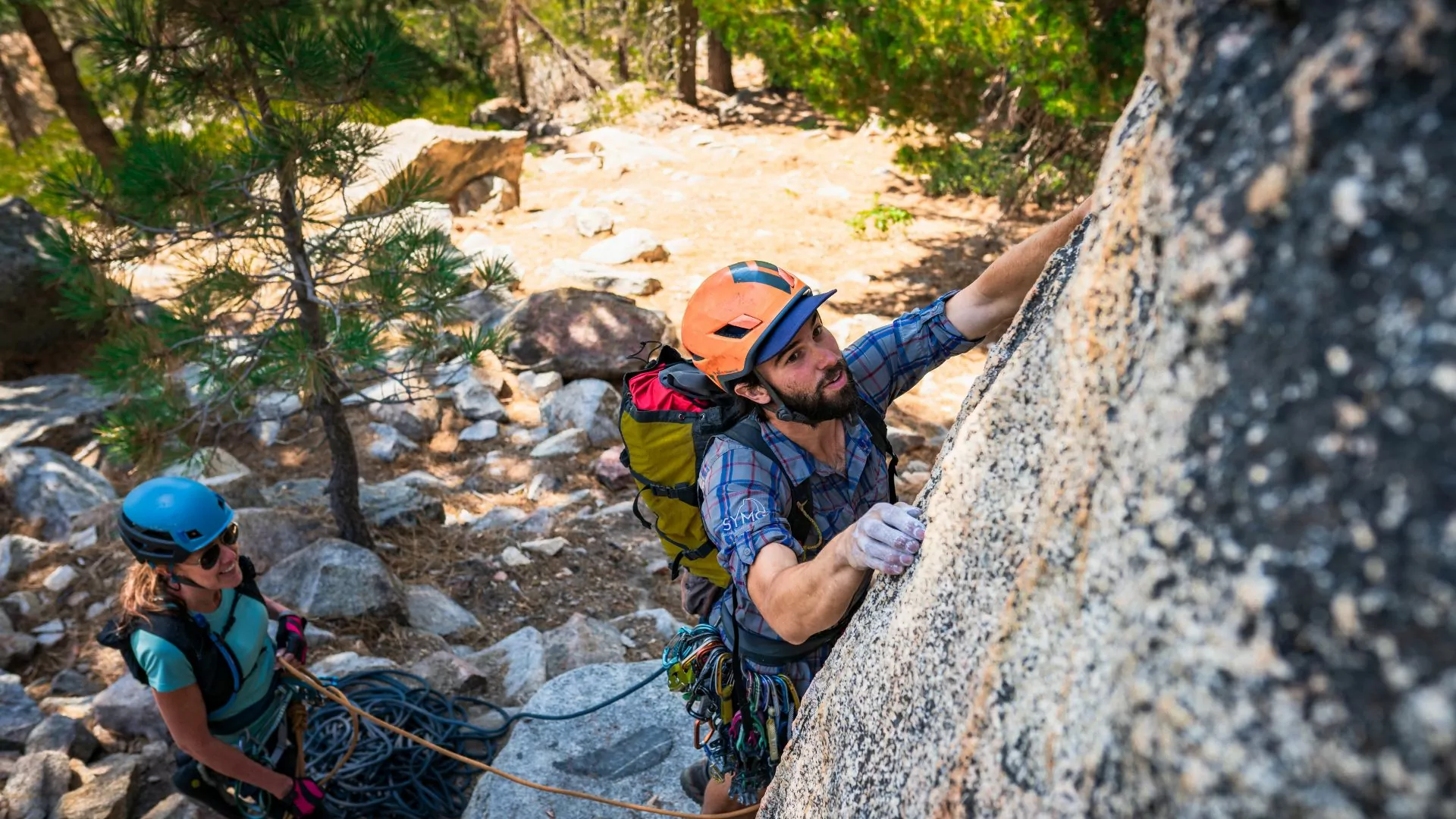 Spring: Waterfalls are flowing, temperatures are pleasant, and the granite walls warm up nicely. However, springtime can be unpredictable, and snowmelt in the higher elevations can make some approaches difficult. Some routes at higher elevations, such as those in Tuolumne Meadows, may still be covered in snow and inaccessible until later in the season.
Spring: Waterfalls are flowing, temperatures are pleasant, and the granite walls warm up nicely. However, springtime can be unpredictable, and snowmelt in the higher elevations can make some approaches difficult. Some routes at higher elevations, such as those in Tuolumne Meadows, may still be covered in snow and inaccessible until later in the season.
Fall: Often considered the best season for climbing, fall offers cooler temperatures, stable weather, and dry rock. The air is crisp, and the granite faces warm quickly in the morning sun. The crowds also start to thin out after the peak summer tourist season, providing a quieter, more peaceful climbing experience.
Summer: The Valley can be brutally hot, with temperatures reaching above 100°F (38°C) at times. For those looking to climb in the Valley during the summer months, an early start is crucial to avoid the heat. Higher elevations, such as Tuolumne Meadows and southern Yosemite, provide excellent climbing conditions in the summer, as they are cooler and often free of the scorching heat that can make Valley climbing uncomfortable.
Winter: Although winter is not the most popular season for climbing in Yosemite, it’s still possible to find excellent conditions on sunny days, particularly in lower-elevation areas like El Capitan’s southwest face. Dedicated climbers who are willing to tolerate colder temperatures and fewer daylight hours can enjoy solitude on the walls, though conditions can be harsh and challenging. Winter climbers will need to be prepared for the added challenges that come with the season, including colder temperatures, potential storms, and icy rock surfaces.
Best Areas for Beginner and Intermediate Climbers
While Yosemite is famous for its big-wall climbs and demanding crack systems, it also offers an array of beginner and intermediate routes. These areas allow climbers to build skills and gain experience before tackling some of the park’s more challenging routes.
Yosemite Valley:
- Swan Slab: Just outside of Camp 4, this area offers short, friendly climbs with cracks and face routes in the 5.6-5.9 range, perfect for those looking to build confidence.
- Five Open Books: A great spot near Yosemite Falls, featuring a variety of multi-pitch climbs like Munginella (5.6) and Commitment (5.9). This area provides excellent opportunities for climbers transitioning to longer, more technical routes.
- Manure Pile Buttress: Home to classic trad routes like After Six (5.7) and After Seven (5.8), which offer good protection and solid rock, ideal for those looking to build their trad climbing skills.
Tuolumne Meadows:
- Lembert Dome: Featuring both trad and sport routes. Routes like Northwest Books (5.6) are popular for beginners.
- Dozier Dome: Offers fun slab routes with moderate ratings, such as Holdless Horror (5.6), perfect for those looking to improve their slab climbing skills.
- Cathedral Peak: A classic climb with an incredible summit view, Cathedral Peak (5.6) offers a more challenging, but still moderate, sublime experience.
Southern Yosemite:
- Fresno Dome: This area provides an excellent mix of beginner slab climbs and moderate multi-pitch adventures like South Pillar (5.6), which are great for new trad climbers.
- Willow Creek Spire: Offering solid trad climbing in the 5.6-5.9 range, Willow Creek Spire is ideal for those transitioning to multi-pitch climbing in Yosemite.
- Shuteye Ridge: A quieter spot with incredible dome climbing, Shuteye Ridge offers both sport and trad routes, ranging from 5.7 to more difficult grades, perfect for intermediate climbers seeking variety.
Exploring Yosemite with a Guide
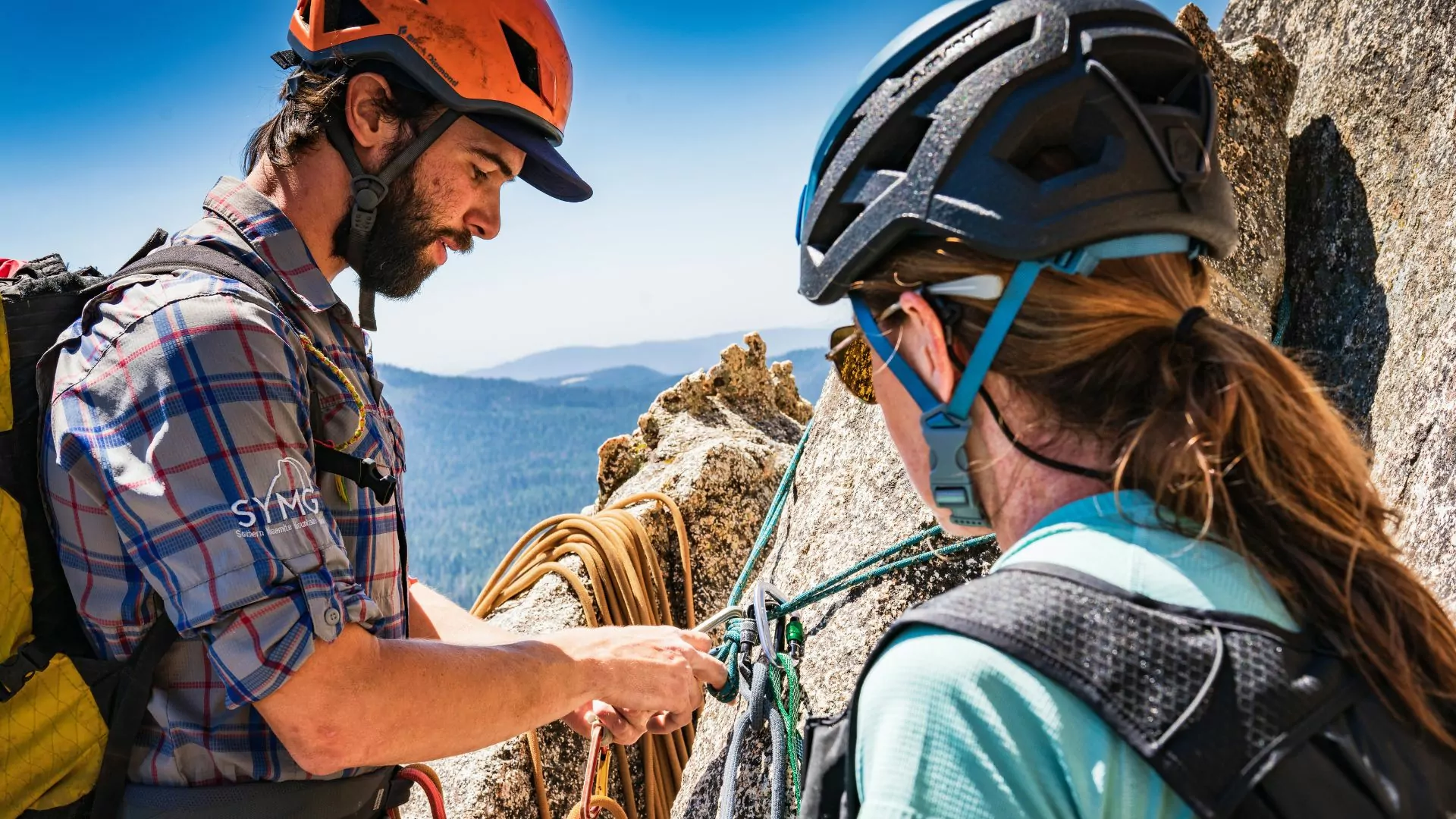
For climbers seeking the high quality instruction, hiring a guide certified by the American Mountain Guides Association (AMGA) can make a significant difference in your Yosemite climbing experience. The AMGA is the premier certifying body for climbing guides in the United States, ensuring that guides meet the highest standards for technical climbing skills, safety, and environmental stewardship.
For a remarkable climbing experience in Yosemite with expert guidance, consider booking a trip through Wildland Trekking’s AMGA-certified guides. One option to get started is the Southern Yosemite Rock Climbing Day Trip, where you can explore some of the park’s most iconic areas with a guide who has been thoroughly trained and who will provide you with the best possible adventure. To learn more about this trip, visit Wildland Trekking’s Southern Yosemite Rock Climbing Day Trip.
For those looking for a more immersive experience, Wildland Trekking also offers a Southern Yosemite Rock Climbing and Camping Adventure, which combines rock climbing with a memorable camping experience. This trip provides an excellent opportunity to not only improve your climbing skills but also experience Yosemite’s breathtaking landscapes and natural beauty in a unique, close-to-nature way. For more information, visit Wildland Trekking’s Southern Yosemite Rock Climbing and Camping Adventure.
Add to the Lore of the Valley
As discussed, Yosemite’s climbing history is rich, its walls are legendary, and its variety of terrain makes it a premier destination for climbers of all levels. From the sun-soaked domes of Southern Yosemite to the towering faces of El Capitan, the park offers something for everyone. Whether you’re a beginner looking to ascend your first route or an experienced climber chasing a big-wall ascent, climbing in Yosemite will leave an indelible mark on your climbing journey and likely leave you coming back again and again.
Start this tradition by joining Wildland for a guided adventure and experience the best of Yosemite’s climbing landscape. With our expert instruction, access Yosemite’s iconic walls, and you’ll create memories that will last a lifetime. Are you ready to climb the granite of Yosemite?



